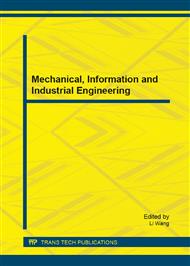p.557
p.562
p.568
p.572
p.579
p.584
p.588
p.592
p.596
The Research of Video Quality Evaluating Based on MATLAB
Abstract:
Video quality impairments mainly caused by noisy transmit channel. No-Reference evaluating method is an important way to predict the video quality due to without any other loader to the transmit channel. Aiming at improve the accuracy and effectiveness of No-Reference video quality evaluating model, a novel variable-weight evaluating model is proposed. Motion intensity is introduced to qualify the variation of video content. And a weight control function is obtained based on the statistic studying method. Then the weight of clearness and smoothness can be adjusted in real time through the weight control function. The variable-weight evaluating model takes into the human perceptual properties. The experimental results show that the variable-weight evaluation model outperforms the existing evaluation models and achieves high correlation with the subjective test results.
Info:
Periodical:
Pages:
579-583
Citation:
Online since:
March 2015
Authors:
Price:
Сopyright:
© 2015 Trans Tech Publications Ltd. All Rights Reserved
Share:
Citation:


